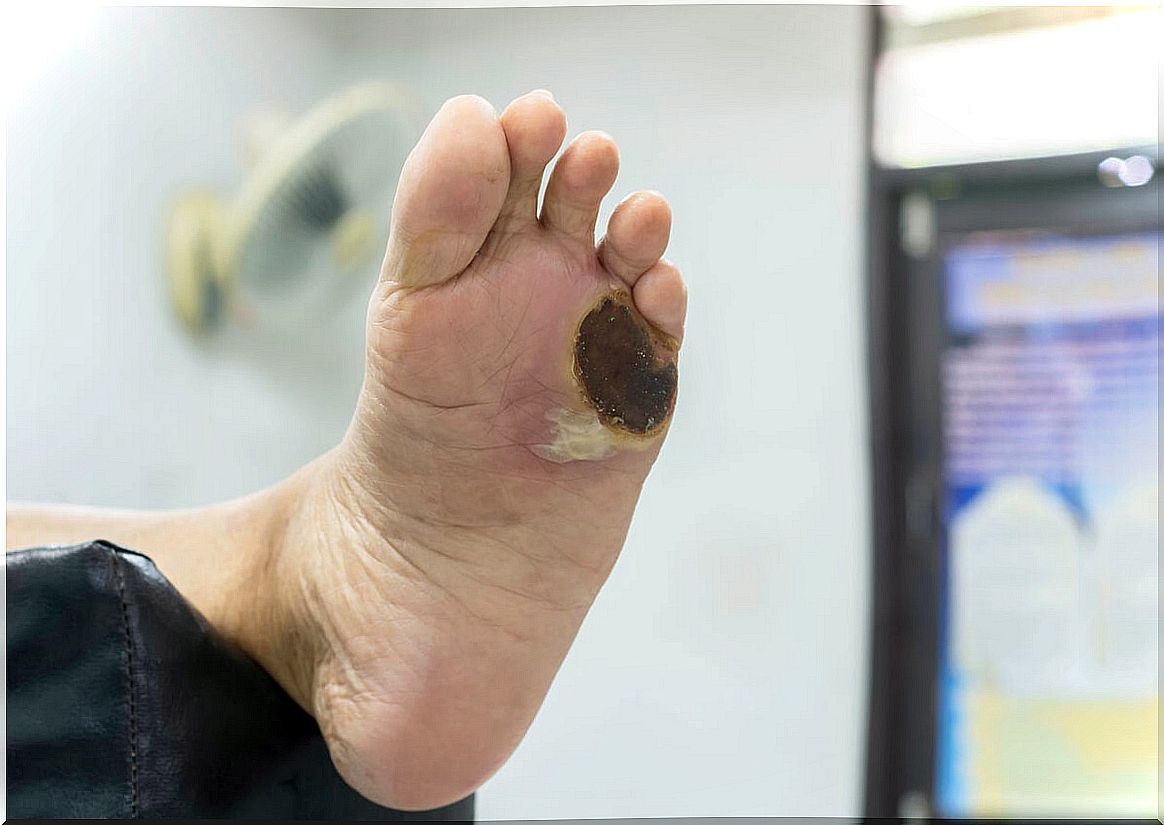Types Of Amputations, Minor And Major
An amputation is the loss of a part of the body, usually a finger or toe, an arm, or a leg. Amputations occur from surgery, accident, or trauma. In addition to the causes for which an amputation occurs, there are different types of amputations.
Currently, amputations are carried out when the person has a life-threatening condition. For example, when the patient has bone cancer, wounds in which the limb cannot be saved, gangrene (tissues die because blood does not reach them or because there is an infection), among others.
In the case of surgery, amputation is used to control pain or the process caused by a disease of the limb, such as a malignant tumor.
The amputation of a part of the body can lead to what is known as phantom limb syndrome. The amputee feels as if the missing part is still present and functional. They may also have pain, burning, itching, cramps, and even paralysis of the affected area. There are treatments for this syndrome, although they are challenging for doctors and patients.

How is an amputation performed?
The different types of amputations, in general, should be performed trying to preserve as much of the limb as possible. The first thing to do is to tie the artery and vein that cross the area to be amputated. The purpose of this maneuver is to prevent bleeding.
Afterwards, the muscles surrounding the limb and finally the corresponding bones must be cut with a saw. After the dead tissue is completely removed, the doctor may decide whether to close the rest of the skin (closed amputation) or leave the area open (open flap amputation).
In a closed amputation , the wound must be sutured immediately. In the opposite case, the skin will remain flushed from the amputation area for several days so that the tissue can be cleaned well, thus preventing the surgical wound from becoming infected.
Later, once the stump tissue is clean and free of infection, the excess skin is stitched together to close the wound. Then a bandage will be applied according to the surgical technique that has been carried out. In addition to the bandage, the doctor may place a stocking over the amputated area to hold the drainage tubes and bandages from the wound.
Classification and types of amputations
We can make a broad classification of the types of amputations dividing them into minor and major. The first are those that are limited only to the foot and the second, the largest, encompass more joints, such as the knee or the hip. Among the types of minor amputations we can highlight three:
- Transphalangeal.
- Digital trasmetatarsal.
- Transmetatarsal of the foot.
And within the classification of major amputations, we should know these six:
- Infracondylar or transtibial amputation : it is carried out at the level of the tibia. Although it requires rehabilitation, it has the advantage that the knee is preserved, facilitating the implantation of a prosthesis.
- Syme amputation : performed at the ankle.
- Pirogroff amputation : it is very similar to the previous one, although less frequent. In this case, some of the calcaneal bone is preserved.
- Knee disarticulation : the leg is amputated at the knee and does require rehabilitation.
- Supracondylar amputation : This surgery is performed above the knee. A very complicated rehabilitation must be performed that will depend on the size of the stump. However, it is the one that has the least problems when it comes to healing.
- Hip disarticulation : it is the most dangerous, since it has a high mortality rate. It is done in extreme cases.

Below we will briefly explain the main characteristics of minor amputations.
Transphalangeal amputation
It is a minor amputation, so it is performed on the foot, specifically, the distal part of the ring finger is amputated. It is an easy operation that does not need rehabilitation or orthotics, that is, any external device that serves as an aid or support to walk or support the foot. They are widely used in the field of orthopedics.
Transmetatarsal digital amputation
In this case, the amputation is performed below the metatarsal head, which is a foot bone made up of 5 other bones, the metatarsals. This operation, like the previous one, does not need rehabilitation. Only a silicone or sponge is placed between the fingers to prevent them from drifting.
Transmetatarsal amputation of the foot
It’s the last minor amputation we’ll see. The amputation of all the toes is carried out at the transmetatarsal level. It also does not require rehabilitation, since a padding is placed inside the shoe in order to help the patient walk in the most natural way possible.
Recovery after amputation

Recovery and the ability to function after an amputation depend on many factors. For example, the reason for the amputation, whether the person has diabetes or poor blood flow, and age.
As experts from the World Health Organization (WHO) point out, many amputees use artificial limbs. Learning to use them takes time, but physical therapy can help. Recovery can be difficult and frustrating. Therefore, it is important to speak with your doctor if you have any doubts to evaluate a treatment with medicine or therapy.
The bottom line is that most people can be active even after an amputation. It will take a while to adjust but, in general, it is possible to get on with everyday life.









